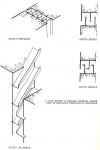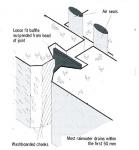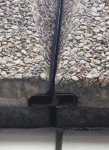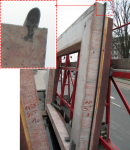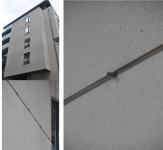Today, the basis is chemistry, and the new question to be asked is whether to use on-site application or a prefabricated gasket. Curtain walls and unitized panels always use prefabricated gaskets, so why aren’t these used in concrete? Look at this panel seen in Amsterdam some years ago!
In most cases, the strategy is combined: an impermeable material seals the joints in two planes, outside and inside, and in-between there is a cavity. If a lost drop of water gets in through failure in the sealing, it will rapidly dry because of the ventilation ensured by the micro tubes that keep air circulating inside the cavity in-between. However, most importantly, these tubes help to equal the pressure of air inside the cavity with the outside pressure, which stops the drop of water from getting in!

